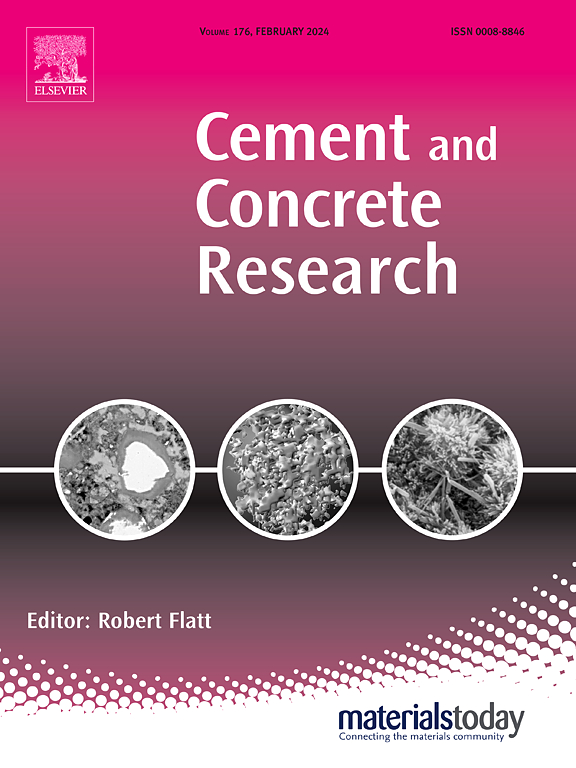Polymorph and minor phase quantification in Portland clinker by X-ray powder diffraction analysis: Addressing challenges and foreign ion effects
IF 10.9
1区 工程技术
Q1 CONSTRUCTION & BUILDING TECHNOLOGY
引用次数: 0
Abstract
A comprehensive investigation of the phase composition of eight commercial clinkers was conducted through state-of-the-art synchrotron (SXRD) and laboratory (LXRD) X-ray diffraction, and supporting techniques. Challenges involved in polymorph and minor phase quantification, and the effects of foreign ions on the clinker chemistry were addressed. SXRD yielded higher C3S and lower C2S contents than LXRD, besides higher C3S M3. Visual identification of C3S predominant polymorphs did not always match the Rietveld results for LXRD. Using orthorhombic-C3A in the refinement of samples that did not have this polymorph led to an underestimation of C4AF and α′H-C2S. Axial divergence made the quantification of β-C2S inaccurate for non-monochromatic LXRD. C3S formation was governed by the sulfate/magnesium ratio and Na2Oeq content rather than LSF, while C3S polymorphism was governed by the sulfate/magnesium + alkali ratio. Optimal chemistry ranges were proposed for maximizing C3S formation. C3A polymorphism was generally controlled by the sulfate/alkali ratio.
用x射线粉末衍射分析波特兰熟料中的多晶和小相定量:解决挑战和外来离子的影响
通过最先进的同步加速器(SXRD)和实验室(LXRD) x射线衍射以及配套技术,对8种商业熟料的物相组成进行了全面的研究。讨论了多晶型和小相定量的挑战,以及外来离子对熟料化学的影响。SXRD的C3S含量高于LXRD, C2S含量低于LXRD,且C3S M3较高。C3S优势多态性的目视识别并不总是与LXRD的Rietveld结果相匹配。在没有这种多态性的样品中使用正交- c3a会导致C4AF和α ' H-C2S的低估。轴向发散使得非单色LXRD对β-C2S的定量不准。C3S的形成受硫酸盐/镁比和Na2Oeq含量的影响,而不受LSF的影响,而C3S的多态性受硫酸盐/镁+碱比的影响。提出了使C3S形成最大化的最佳化学范围。C3A多态性一般受硫酸盐/碱比控制。
本文章由计算机程序翻译,如有差异,请以英文原文为准。
求助全文
约1分钟内获得全文
求助全文
来源期刊

Cement and Concrete Research
工程技术-材料科学:综合
CiteScore
20.90
自引率
12.30%
发文量
318
审稿时长
53 days
期刊介绍:
Cement and Concrete Research is dedicated to publishing top-notch research on the materials science and engineering of cement, cement composites, mortars, concrete, and related materials incorporating cement or other mineral binders. The journal prioritizes reporting significant findings in research on the properties and performance of cementitious materials. It also covers novel experimental techniques, the latest analytical and modeling methods, examination and diagnosis of actual cement and concrete structures, and the exploration of potential improvements in materials.
 求助内容:
求助内容: 应助结果提醒方式:
应助结果提醒方式:


